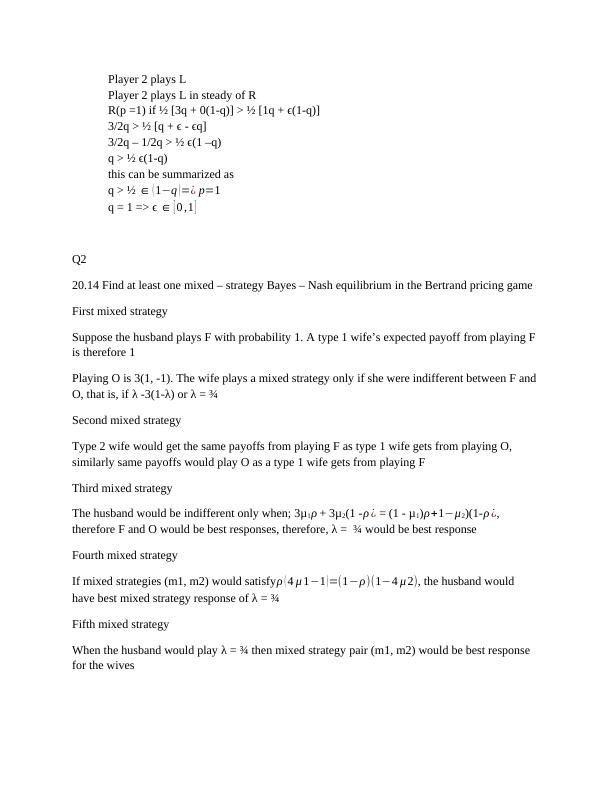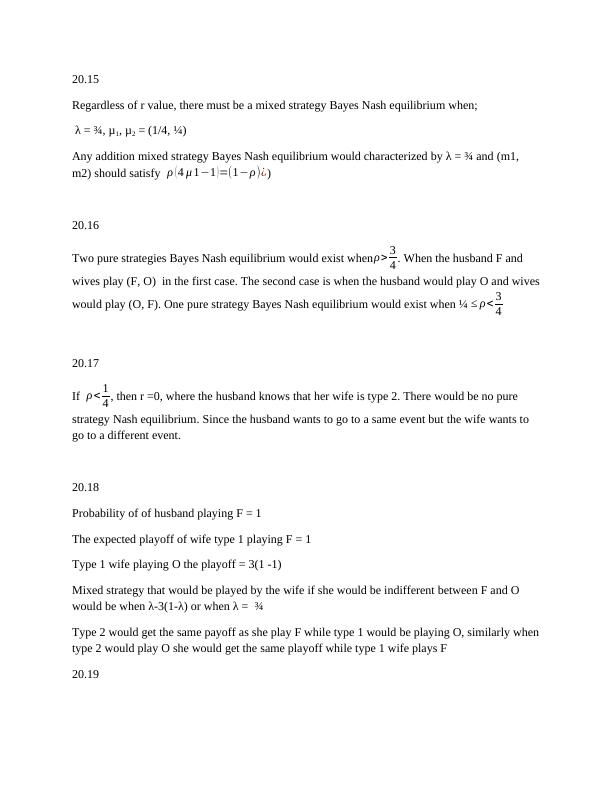Mixed Strategy Equilibrium in Game Theory
9 Pages1941 Words69 Views
Added on 2023-03-23
About This Document
This document discusses the concept of mixed strategy equilibrium in game theory. It explains how players in a game can use mixed strategies to maximize their payoffs. The document explores different scenarios and provides examples to illustrate the concept. It also discusses the implications of mixed strategy equilibrium and its relevance in decision-making.
Mixed Strategy Equilibrium in Game Theory
Added on 2023-03-23
ShareRelated Documents
End of preview
Want to access all the pages? Upload your documents or become a member.
Game Theory: Algorithms and Applications
|5
|963
|390



